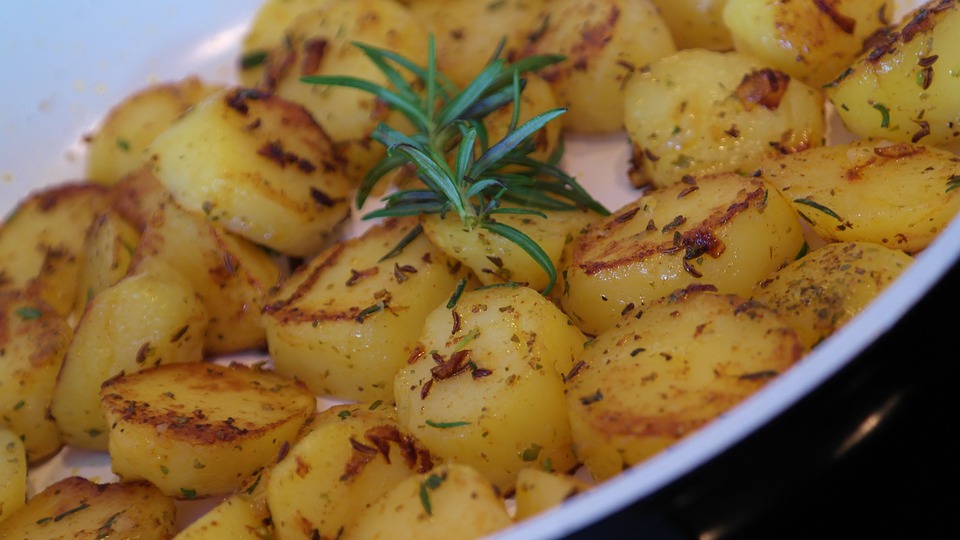With Christmas around the corner, you’ll be pleased to know that a traditional roast with accompanying root vegetables, a few brussels sprouts and some herbs thrown in, fits in very well with the ideal foods to eat in winter. Enjoy it with impunity.
By eating what nature offers up with the seasons, you satisfy your natural cravings and give your body what it needs for that season. You remain healthy, strong and resilient, without succumbing to the usual ails of the season.
The ‘healthy’ diet as seen by most people today – low fat, low carbohydrate and salads – is actually one that works very well in spring but not so well in winter. We naturally crave warm, heavier, oilier foods which ground us and keep us warm. The season of autumn and winter are high-vata seasons. This means we can feel dried out, cold and possibly airy and ungrounded (although many of you may find that you feel sluggish if your digestion isn’t working well). Therefore, we need the opposite qualities in our food; oiliness, heaviness (without being indigestible) and warmth.
Keep healthy with oily, grounding, warming foods with sweet, sour and salty tastes
That’s what we crave isn’t it? Who really wants to eat a big plate of cold salad in mid-winter?
Sweet, sour and salty: The tastes which nature provides in winter, and which we need, are predominantly sweet and salty. We also need the sour taste which can come from small amounts of naturally fermented foods used to tide us through the winter. The bitter and astringent tastes from green leafy plants are rarer and pungent flavours are less in evidence. We still need some of these but in smaller amounts, as you find in nature.
Warm: This is warm in temperature and in quality; soups, stews, casseroles, cooked food providing physical warmth and herbs and spices helping warm up the body with their thermo-regulating properties. Use as many herbs and spices in your winter cooking as you can.
Oily: cook with plenty of oils such as ghee, coconut oil and virgin olive oil. Drizzle over unrefined oils such as flax, sesame and walnut to steamed vegetables and other foods;. [Do not cook with virgin oils and do not use refined vegetable oils.]
There isn’t as much variety available… but we have all we need
Seasonal vegetables
These are predominantly root vegetables whose starchy nature lends them a naturally sweet taste and a heavier, nourishing effect.
- Beetroots
- Celeriac
- Jerusalem artichoke
- Parsnips
- Potatoes (peeled, with oil and spices)
- Swede
- Sweet potatoes
- Turnips
- Winter squash
There are also a few greener, bitterer vegetables around. We need some of these as we always need all 6 tastes in our meals but in the winter, we need less of this taste.
- artichokes (globe)
- brussels sprouts
- celery
- fennel
- kale
- cabbage (with oil and spices)
- cauliflower (with oil and spices)
And we can have moderate amounts of the pungent vegetables available at this time of year:
- Shallots
- Leeks
- Horseradish
There are a couple of seasonal fruits, best eaten cooked and warm:
- Apples
- Pears
Plenty of protein
Protein is heavy and grounding, along with generally having a sweet taste. Winter is the season where we can digest and indeed we need more protein.
- Small amounts of meat and fish can be good in winter if you eat it. Continue to avoid pork and lamb, eat minimal beef but focus more on chicken, turkey, duck, goat, venison and fish.
- Eggs
- Nuts and seeds
- Avocado
- Dairy, especially warm spiced milk and fresh cheeses (with added black pepper)
- Quinoa and millet
- Yellow mung, with less focus on the other pulses during the winter
Lots of wholegrains
- Lots of wholegrains such as rice, oats, spelt, rye, barley, quinoa, millet, corn, amaranth, buckwheat (not modern wheat due to indigestibility)
Digestive capability increases so you might want to eat more (woo hoo!)
Digestive fire increases in the winter, so follow it. Eat more if your body is asking for it. If you need it, you will naturally build up a little healthy reserve in the body which will then fall away in spring.
And we look forward to spring
Moving from winter into spring, the kapha increases. Nature, once again, provides perfect foods for this with lots of green vegetables and a light, bitter, astringent and pungent diet. More variety and just what the body needs. Isn’t our interconnectedness with nature wonderful?!
Some people should not follow these winter guidelines…
These guidelines are for someone in relatively good health and balance. If you have been advised that you have high āma or kapha, this advice will not work for you and you will need to talk to a practitioner about what would work better for you in this season.
If you need more help understanding your health needs, don’t hesitate to get in touch for a face-to-face or Skype consultation.
Until next time, take care of yourselves.
Kate
Author: Kate Siraj, Ayurvedic Practitioner, BSc Ayurveda, MChem (Oxon), MAPA. © The Ayurveda Practice




0 Comments